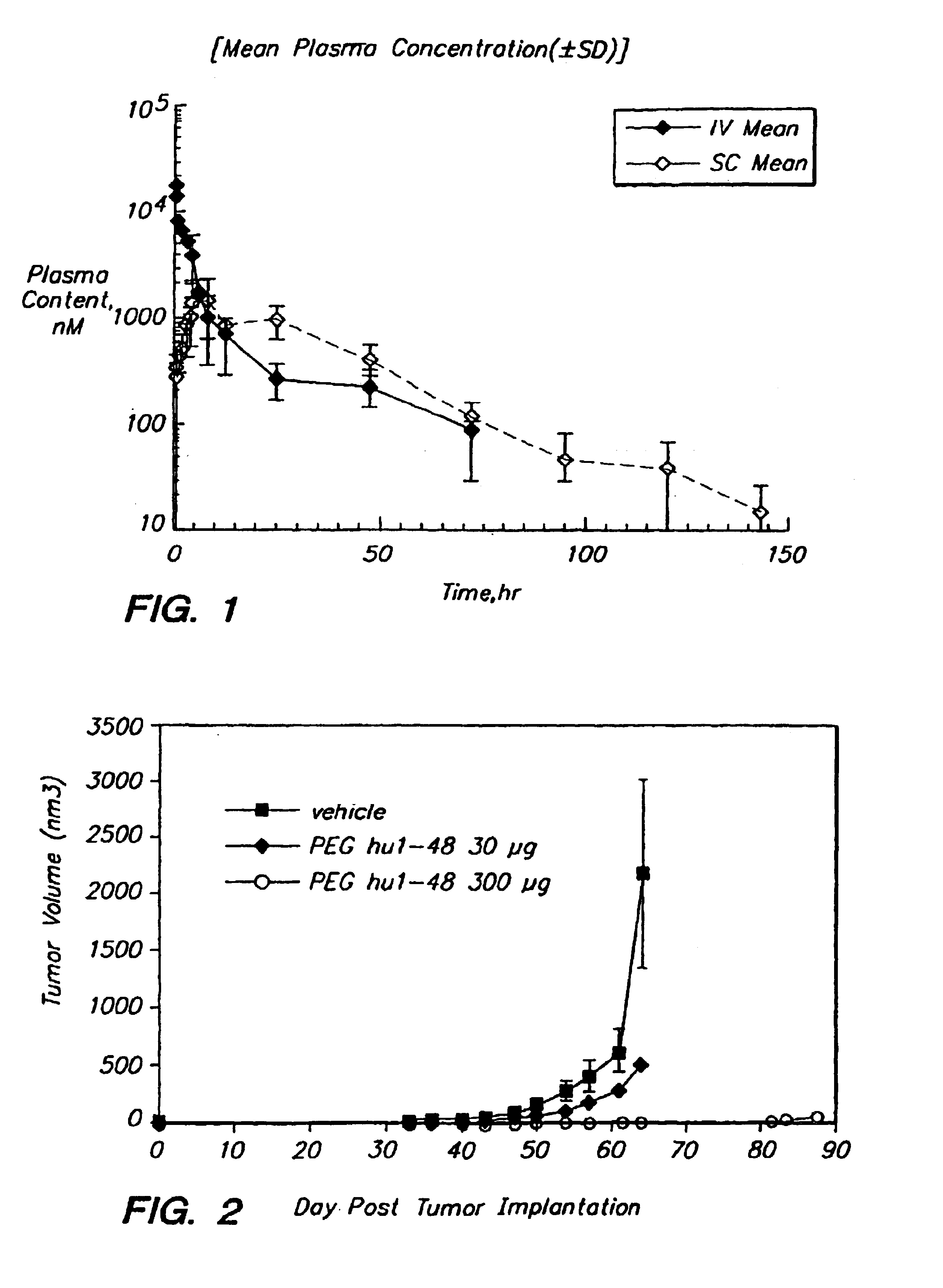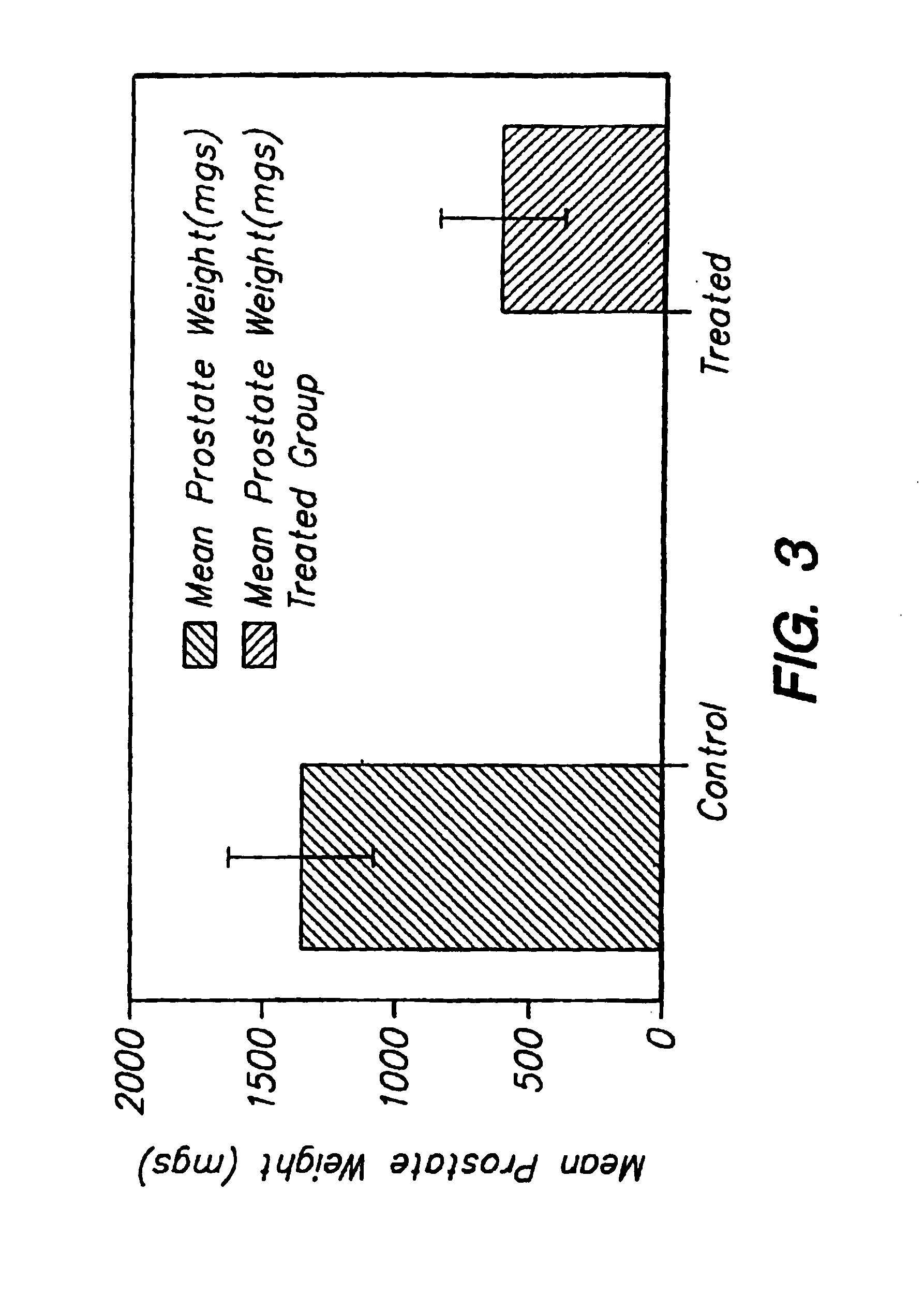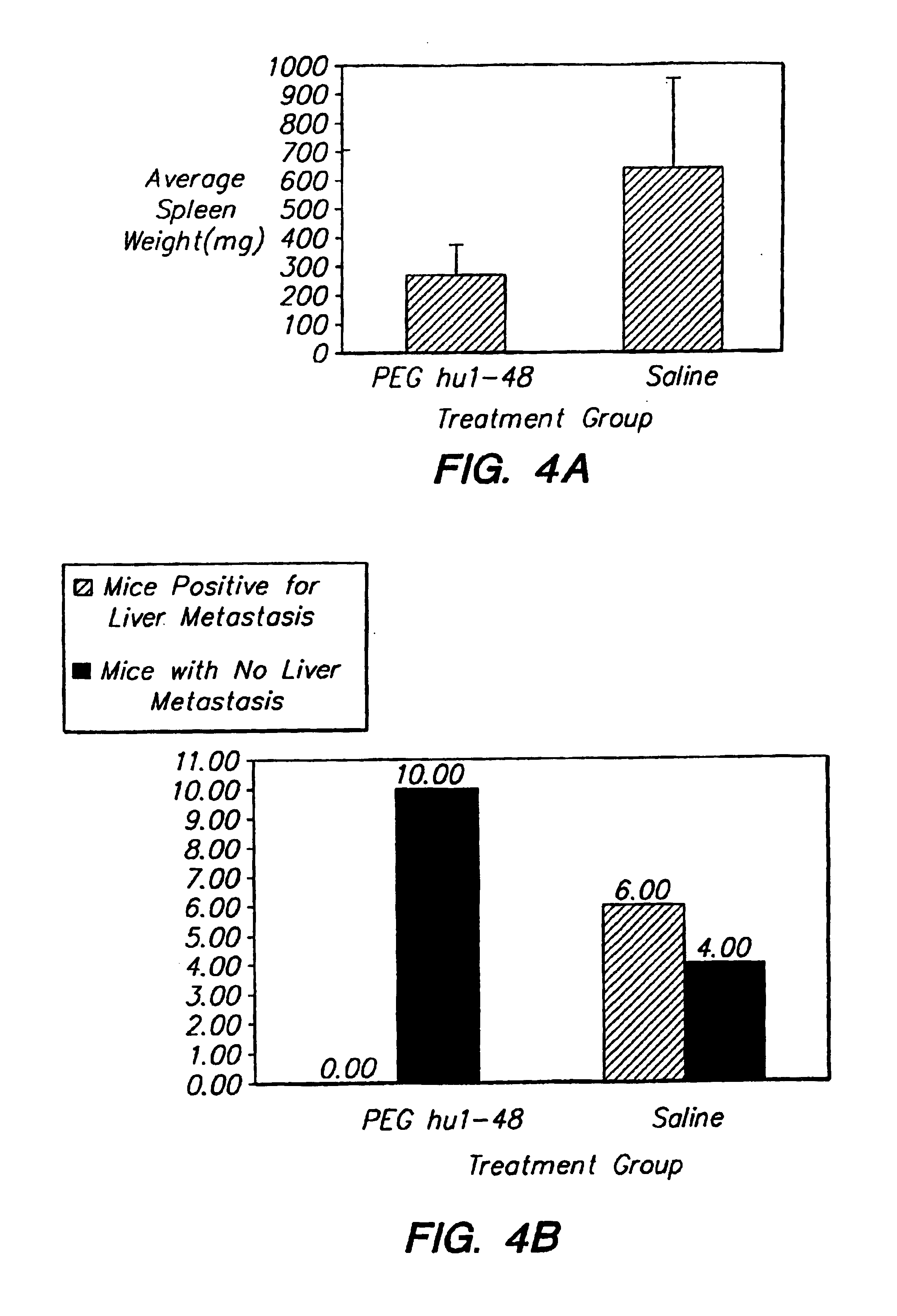Method for increasing the serum half-life of a biologically active molecule
a biologically active molecule and serum half-life technology, applied in the field of chemical modification of biologically active molecules, can solve the problems of unfavorable maintenance of therapeutic levels of drugs, long serum half-life is undesirable, and prevent the development of many otherwise promising drug candidates, so as to reduce primary tumor growth, and reduce the effect of primary tumor
- Summary
- Abstract
- Description
- Claims
- Application Information
AI Technical Summary
Benefits of technology
Problems solved by technology
Method used
Image
Examples
example 1
Determination of the Half-Life of uPA1-48
[0058]uPA1-48 was produced in yeast, purified and concentrated into PBS. When produced in yeast, uPA1-48 lacks a fucosylation which is present when the protein is expressed in mammalian cells. The purified protein was injected intravenously into mice. Blood samples were collected at various time points, and the amount of uPA1-48 present in each sample was determined. The serum half-life of uPA1-48 was found to be approximately 10 minutes in mice.
example 2
Generation of a Polypeptide with an N-Terminal Aldehyde
[0059]A half liter solution of uPA1-48 at 10-13 mg / ml in 50 mM sodium phosphate, pH 6.8, was prepared. The molar concentration of the solution was determined via spectrometric methods. A 1.5 molar excess of freshly prepared sodium meta periodate (MW=214 μg / μmole) was added and mixed, and the resulting solution was incubated in the dark for 10 minutes at room temperature. The product were separated from excess periodate and isolated using tangential diafiltration with 30 mM sodium acetate, pH 4.5.
example 3
Coupling of PEG Hydrazide to uPA1-48 Aldehyde
[0060]PEG hydrazides were obtained commercially (Shearwater Polymers, Inc., 2307 Spring Branch Road, Huntsville, Ala. 35801). PEG hydrazides having nominal average molecular weights of 3.4 kD, 5 kD, 20 kD and 25 kD, and having a single hydrazide group at one end of the polymer, were used. Additionally, a PEG hydrazide of average molecular weight of 50 kD, having a hydrazide group at each end of the polymer so that two uPA1-48 molecules could be conjugated, was used. The concentration of the N-terminal aldehyde solution was determined, and a two fold molar excess of each PEG hydrazide was added, in separate reactions, to the uPA1-48 N-terminal aldehyde produced in Example 2. The reaction mixtures were incubated for 26 hrs. at 37° C. Approximately 60% of the uPA1-48 molecules were conjugated to PEG following the reactions. The conjugates were purified via column chromatography. The conjugates were then diafiltered and concentrated into PBS ...
PUM
| Property | Measurement | Unit |
|---|---|---|
| molecular weight | aaaaa | aaaaa |
| molecular weight | aaaaa | aaaaa |
| molecular weight | aaaaa | aaaaa |
Abstract
Description
Claims
Application Information
 Login to View More
Login to View More - R&D
- Intellectual Property
- Life Sciences
- Materials
- Tech Scout
- Unparalleled Data Quality
- Higher Quality Content
- 60% Fewer Hallucinations
Browse by: Latest US Patents, China's latest patents, Technical Efficacy Thesaurus, Application Domain, Technology Topic, Popular Technical Reports.
© 2025 PatSnap. All rights reserved.Legal|Privacy policy|Modern Slavery Act Transparency Statement|Sitemap|About US| Contact US: help@patsnap.com



